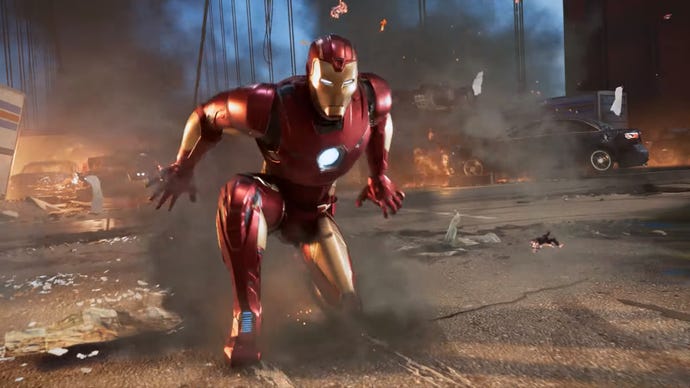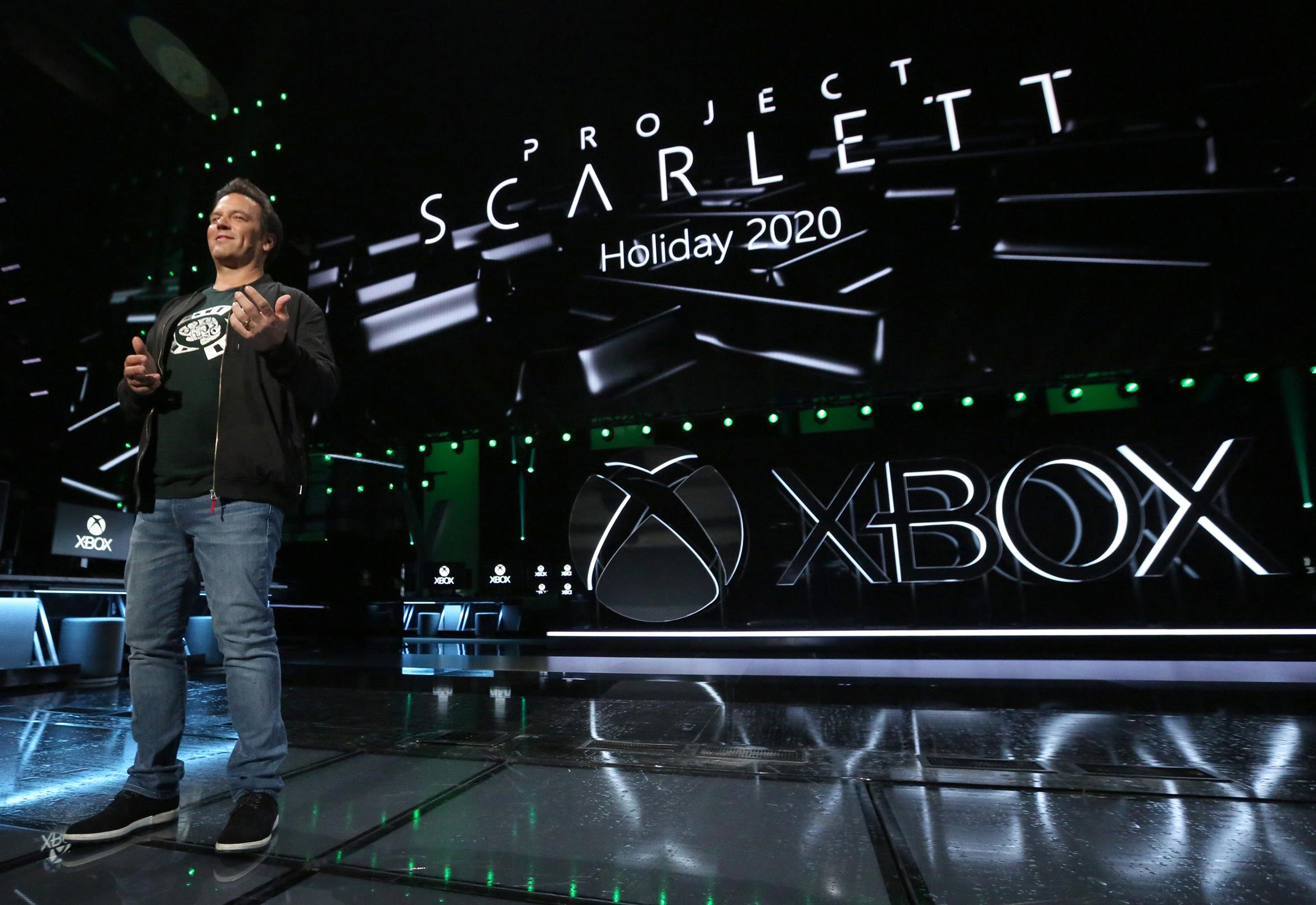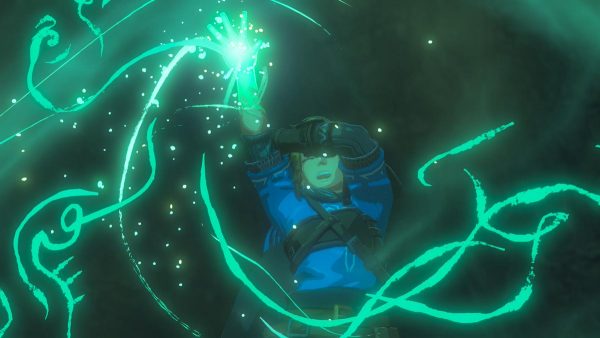With PS5 and Xbox Scarlett on the horizon, promises of long-term game support ring hollow
As E3 winds down, it's easy to imagine that many of the games we've just seen will get better versions a year or so after launch.
In gaming’s current moment, there are two major themes that affect how we look at upcoming releases. The first is that the blockbusters we start playing over the coming months will still be occupying our time years down the line, as the games-as-service model asks us to commit to our games long-term. The other thing at the back of a lot of people’s minds right now is how are going to fundamentally shift at the end of next year when the PlayStation 5 and Xbox Scarlett are released.
These are two facts that are, in some ways, fundamentally incompatible with each other. It’s hard not to come away from this E3, an awkward, transitional ‘one generation is ending but the next isn’t ready yet’ affair, without feeling a little cynical about many of the games shown.
I have a distinct memory of reading an article in an old issue of NGC Magazine – the successor of N64 Magazine – and coming across an editorial about the possibility that games were getting shorter, based on the GameCube’s early line-up. Was 12 hours going to become the norm, the article asked, or would the next generation still give us 30+ hour epics?
That was 17 years ago, and things have changed. Games in which the credits roll after 12-15 hours, which you then put down, are becoming rarer. While the indie sphere is still producing plenty of great, short games that end definitively, games are designed more and more to keep us around for years to come, not just with traditional DLC, but with frequent updates that introduce new content or change things up. The idea of playing The Division 2 for 30 hours, finishing it, and then walking away would cause an Ubisoft executive to break out in hives (even if that is, I earnestly believe, the best way to enjoy The Division).
This push towards post-purchase monetisation started when the preowned market was hitting publishers hard, and games needed ongoing support and DLC to prevent trade ins. Here in Australia, our major game retailer, EB Games, still allows you to perform seven day no-questions-asked returns on any game for store credit, even if you opened it up and finished it.
But that matters less now – digital is king, free-to-play titles can be hugely successful, and except for Steam’s restrictive return policy, sales are final. This model of games as service has stuck around for a simple reason – making a game costs more and more, and a game that remains relevant for years remains profitable, too.
Many of the games shown at E3 this year want us to stick around, continuing to invest our time and money into them for years to come. Ghost Recon Breakpoint, Rainbow Six Quarantine, Marvel Avengers, Cyberpunk 2077, Dying Light 2, Borderlands 3 – these are games designed for serious time investments, all promising long-tail support well beyond launch.
And it’s difficult to imagine that many of them won’t be getting next-gen releases if they prove successful, rendering the versions we bought at launch moot down the track. It’s a widespread question for many of the games we saw announced – if we buy Final Fantasy 7 Remake’s first installment on PS4, for instance, will we be able to finish it on PS4? If a PS5 version releases, will we still be satisfied with the original release?
You could argue that re-releases likely won’t be as much of a thing on the PS5 and Scarlett, since both systems are promising backwards compatibility. But when you’re playing the inferior version of a games-as-service title, when you’re aware that if you just laid down money again your beloved game would suddenly be a much better experience, it’s hard not to feel like you’re being left out. That’s surely going to make 2020 a very awkward year for game releases.
The solution for many publishers, I’d speculate, might be to try and push us towards their subscription services. That would mean that we could upgrade to new versions of existing games, and support for the iterations of games we’re currently being asked to buy over Christmas and Q1 of next year could slowly be phased out.
But subscription bloat is a real concern – Games Pass is great, but Ubisoft’s upcoming Uplay Plus service already feels like one too many as we all start to calculate how much we’re spending on Netflix, Spotify, and everything else we’re now paying for monthly. And once you’re aware of the pattern, once you can see it on the horizon, it’s difficult to get too jazzed about a lot of upcoming releases that are asking for a heavy time investment when you know that new consoles are on the horizon.
Once a new system is out, or even just approaching release, the quality of games released for the previous generation of console tends to drop off fast. Games built as cross-generation experiences putting far more energy into the glossy new machine, the one that most critics and streamers will be reviewing the game on, and any game releasing for Xbox One and PS4 is now under pressure to be completed before it becomes much less relevant.
It’s very easy to imagine Marvel’s Avengers hitting PS5 in early 2020 (if not earlier) with an array of improvements. It’s also easy to imagine that a lot of folks who already bought the PS4 version will reluctantly double-dip, knowing that it’s going to be hard to stick with the inferior version. After all, how many of us are still playing Grand Theft Auto 5 on Xbox 360? Sales for previous generations drops pretty soon into a new generation – remember how only 3% of Metal Gear Solid 5 sales were on Xbox 360 and PS3?
This is, perhaps, why Nintendo’s scant 40-minute Direct and handful of reveals sparked more excitement than what the bigger publishers could manage. Nintendo has always marched to the beat of their own drum, for better or worse, and even their longest games never feel like they’re trying to make you devote your life to them (well…maybe Animal Crossing, but it’s a bit different when a game’s major ‘spring update’ actually just means that it’s spring in-game for three months).
There’s an irony in this, in that a lot of the Switch’s best titles are slightly updated versions of Wii U games, but their titles that veer closer to being services – Splatoon, Smash Bros, Mario Maker – have, at least, all received proper sequels that feel like real updates. But the Switch feels like it’s here to stay, and because of that it’s easier to get excited about a Breath of the Wild sequel – while also knowing that if it gets delayed repeatedly and ends up being a cross-generational title, of course we’re buying the Switch 2 version, as we did for the original game.
Sony and Microsoft have tried to express how the transition to new consoles will be easier this time, with services and games carrying across, meaning that you’ll be able to unplug your old console immediately. This is great, and backwards compatibility has made the Xbox One a more attractive prospect, even if only just over half of players actually use it. But we’ll be very surprised if we don’t eventually find ourselves sighing deeply and double-dipping on ‘Definitive’ editions of many of the games shown at E3 this year.




